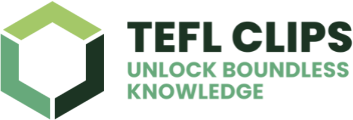Have you ever wondered what it takes to start your own software company from scratch all by yourself? In today’s guide, we’ll walk through everything you need to know to get your own profitable SaaS business up and running.

An Introduction to Software Startups
First things first – what exactly is a software startup? Essentially, a software startup is a business that develops and sells software-as-a-service (SaaS) products. Most SaaS companies operate online and use a subscription-based pricing model where customers pay monthly fees to use the software.
Chances are, you’ve used SaaS products before. From project management tools to email marketing platforms, many of the apps and software we use everyday are SaaS-based. And the best part? These companies are extremely lucrative. With the right idea and execution, you could build a wildly profitable software company too.
The Benefits of Starting a SaaS Business
Let’s start by looking at some of the biggest advantages of building your own software startup:
- High Margins: SaaS businesses operate with margins as high as 99%. Compare this to a physical product business with ~30% margins. You’ll make 3x more profit on the same revenue.
- Recurring Revenue: SaaS companies earn consistent monthly revenue as customers continue renewing subscriptions. This results in predictable growth over time.
- More Control: When using platforms like Shopify or Amazon, your business is at the mercy of the platform owners. With your own software company, you have full control over your business and customers.
The Drawbacks to Consider
Of course, building a software company from the ground up does come with some challenges:
- More Upfront Work: Validating your SaaS idea, building a product, and acquiring customers takes considerable time upfront before you start seeing revenue.
- Costs to Start: While costs are coming down thanks to no-code tools, starting a software company can be more expensive upfront than other online businesses. Expect costs for things like hosting, domains, marketing, etc.
- Doing it Solo is Harder: As a solo founder, you have to handle both business and technical roles. Having a co-founder or team makes building a SaaS much easier.
How to Start Your Own Software Company
Now that you understand the landscape, let’s walk through the step-by-step process for building a profitable software startup completely from scratch:
Step 1: Validate Your SaaS Idea
The first step is coming up with a solid idea that solves a real problem for customers. To start, avoid trying to build something completely new. Instead, look at existing SaaS products and think about how you could provide something better, faster, or cheaper.
Once you have an idea, create a simple landing page and pre-launch signup form to validate demand before you build anything. If people are willing to sign up, you know you’re on the right track.
Step 2: Choose Your Tech Stack
Next, you need to decide what technologies and programming languages you’ll use to build your software. The good news? You don’t need fancy tech to launch an MVP. Use whatever language you’re already familiar with, whether that’s JavaScript, Python, or something else. Worry about scale later.
If you’re new to coding, start by learning HTML, CSS, and JavaScript. This will teach you the foundations for building web apps. Alternately, you can start with no-code tools like Bubble or Webflow to launch your SaaS even faster.
Step 3: Build Your Minimum Viable Product (MVP)
With your tech stack decided, it’s time to start building your MVP. Focus only on the critical features and keep things as simple as possible. Just get a working product that solves a core customer problem. Add bells and whistles later.
Step 4: Set Your Pricing
Pricing should be straightforward for your first SaaS. Look at competitor pricing and offer a comparable plan. You can optimize pricing once you start getting customers and data.
Step 5: Get Your First Customers
Acquiring users is the toughest challenge for early-stage SaaS products. Start by engaging in communities where your target customers hang out. Provide value, build trust, and slowly introduce your product. Offer free trials and discounts to get users onboard.
Step 6: Listen to Customers and Iterate
With your first customers onboard, talk to them extensively. Use their feedback to refine your product and marketing. Iterate rapidly, stay nimble, and continue acquiring users.
And that’s the essential process for going from idea to launched SaaS. While the road ahead won’t be easy, the payoff building a profitable software company can be well worth it.
